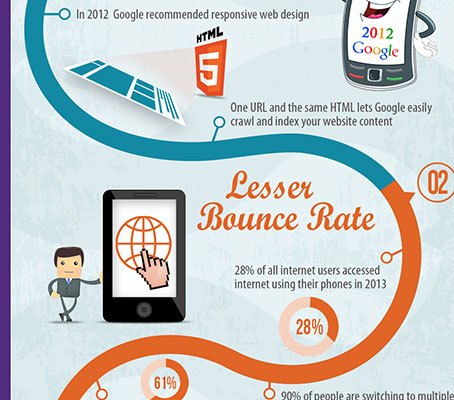The Growth Of Website Design: After That And Currently
The Growth Of Website Design: After That And Currently
Blog Article
Web Content Composed By-Thorsen Hejlesen
In the past, web sites were basic and concentrated on info. Navigating was straight, and design was for desktop computers. Currently, customer experience is essential. Data guides designs for very easy navigation. Responsive layouts match various devices. Today, dark mode decreases stress, and minimal food selections enhance navigating. Interactive features involve customers, and strong visuals stand out. AI integration enhances involvement. See how style has progressed to boost your on-line trip.
Early Days of Website Design
In the early days of website design, simpleness reigned supreme. Internet sites were basic, with limited shades, font styles, and designs. The focus got on offering info instead of fancy visuals. Individuals accessed the internet through slow dial-up links, so rate and functionality were crucial.
Navigating menus were straightforward, commonly situated on top or side of the web page. Websites were made for desktop computers, as mobile browsing wasn't yet common. Web content was king, and developers focused on easy readability over complex layout components.
HTML was the primary coding language made use of, and developers had to work within its restrictions. https://www.fool.com/the-ascent/small-business/social-media/articles/how-to-market-yourself/ and interactive functions were minimal contrasted to today's standards. Web sites were static, with little vibrant content or personalized individual experiences.
Rise of User-Focused Layout
With the evolution of internet site layout, a change towards user-focused layout principles has actually become progressively famous. Today, creating sites that focus on customer experience is critical for involving visitors and attaining business goals. User-focused layout includes understanding the requirements, choices, and actions of your target market to customize the internet site's layout, web content, and includes accordingly.
Developers currently conduct complete study, such as user surveys and usability screening, to gather insights and comments straight from customers. This data-driven approach assists in creating intuitive navigation, clear calls-to-action, and visually enticing user interfaces that resonate with site visitors. By putting the individual at the center of the design process, sites can deliver a much more individualized and pleasurable experience.
Receptive layout has actually additionally emerged as an essential element of user-focused layout, making certain that sites are maximized for numerous devices and display sizes. This flexibility improves ease of access and usability, dealing with the varied means individuals interact with web sites today. Fundamentally, the rise of user-focused style symbolizes a change towards developing digital experiences that prioritize the demands and expectations of completion customer.
Modern Trends in Website Design
Explore the most up to date trends shaping website design today. One prominent pattern is dark setting design, supplying a smooth and modern appearance while decreasing eye stress in low-light settings. One more essential fad is minimalist navigation, simplifying menus and improving customer experience by concentrating on essential elements. Incorporating micro-interactions, such as computer animated buttons or scrolling results, can produce a much more appealing and interactive site. Receptive style stays critical, ensuring seamless individual experiences across various devices. Additionally, utilizing bold typography and unbalanced formats can include aesthetic rate of interest and draw attention to details web content.
Integrating AI innovation, like chatbots for consumer support or customized referrals, boosts customer involvement and simplifies procedures. Access has likewise come to be a substantial fad, with developers focusing on inclusive design techniques to cater to diverse customer demands. Accepting sustainability by enhancing website efficiency for speed and effectiveness is one more arising fad in web design. Working together with individual responses and data analytics to repeat and boost style constantly is vital for staying appropriate in the ever-evolving electronic landscape. By embracing these contemporary fads, you can create a visually enticing, easy to use site that resonates with your audience.
related webpage
As you review the evolution of web site style from the early days to currently, you can see just how user-focused layout has actually come to be the driving force behind contemporary patterns.
Accept the journey of modification and adaptation in website design, constantly maintaining the customer experience at the center.
Keep current with the most recent fads and innovations, and never quit progressing your technique to create aesthetically spectacular and straightforward websites.
Develop, adapt, and develop - the future of website design is in your hands.
